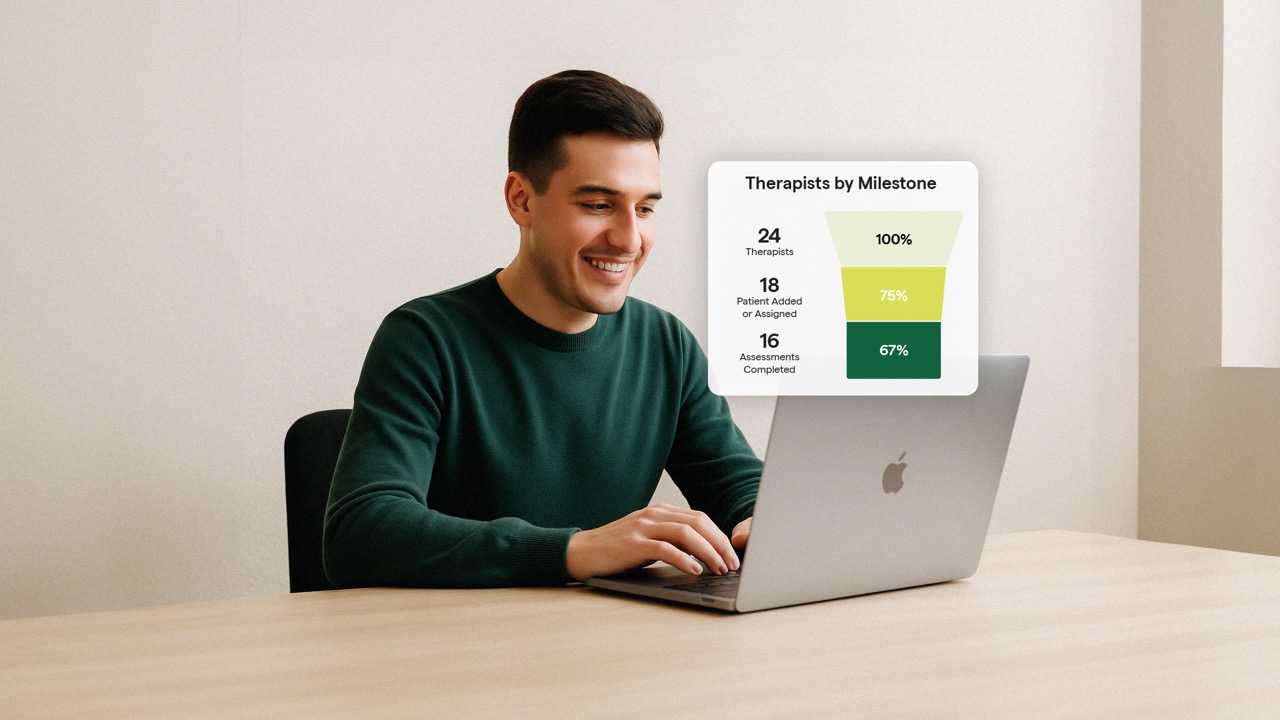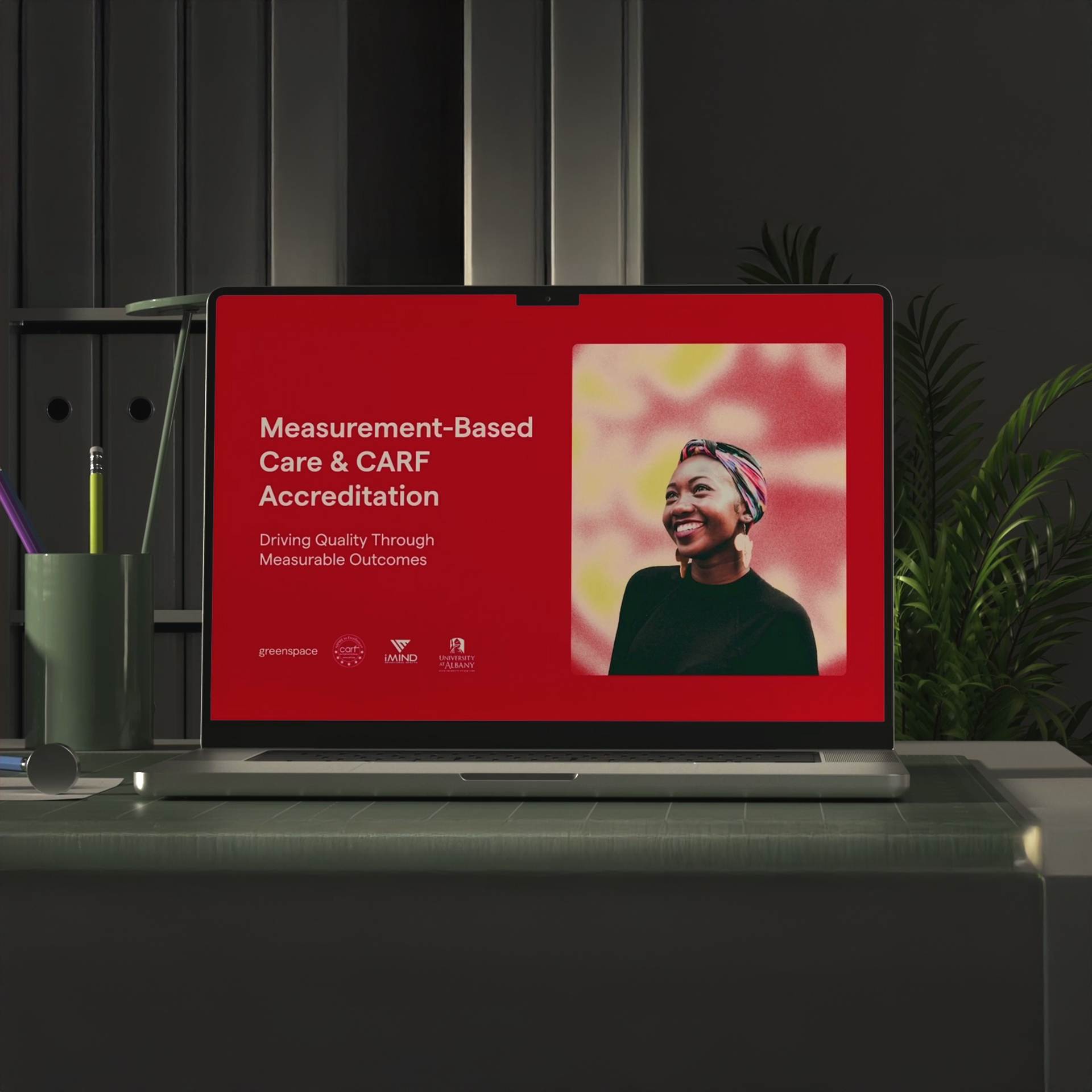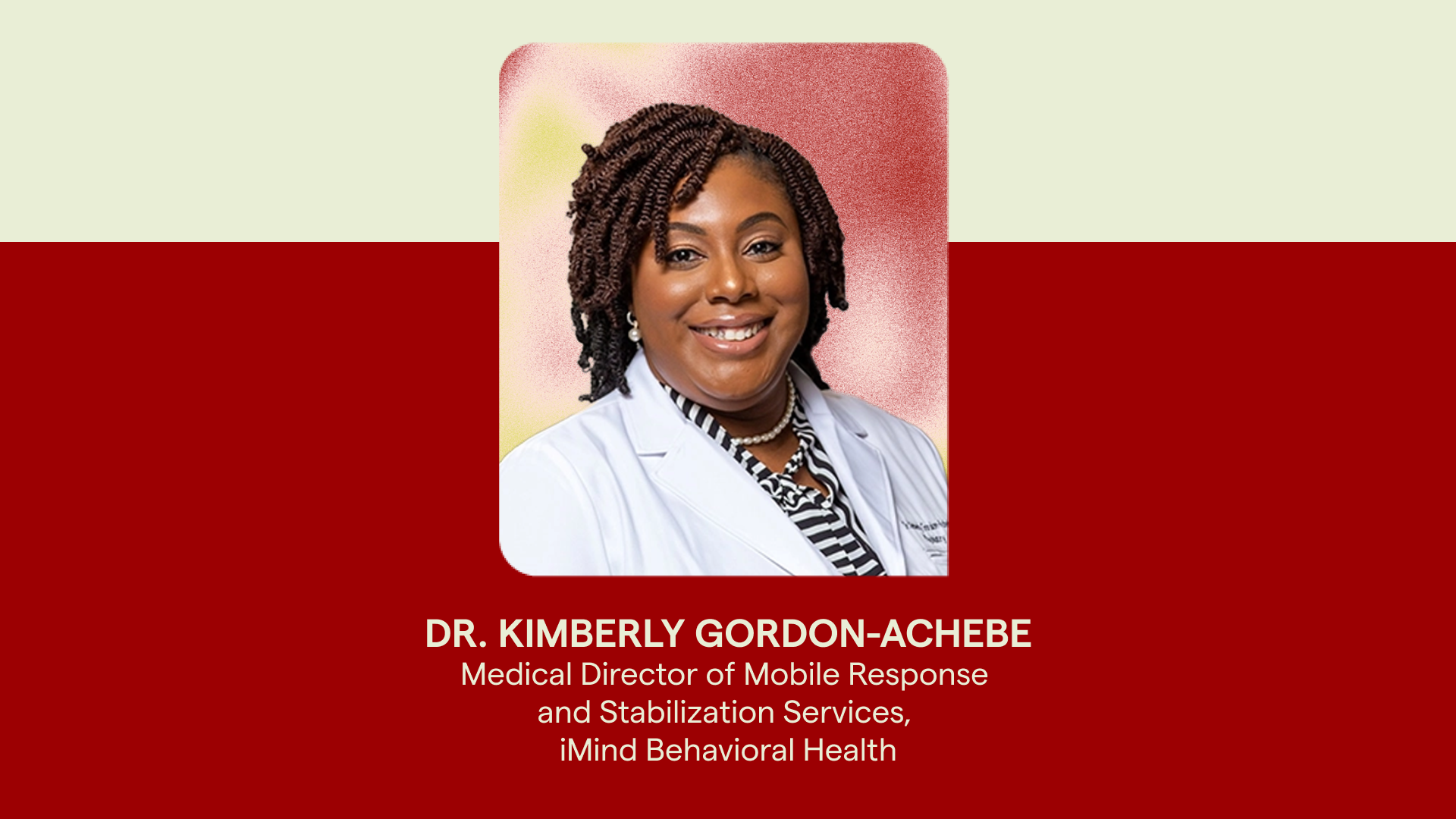
Many clinicians recognize the immense clinical value of Measurement-Based Care (MBC), but introducing it to clients may feel challenging at first. Explaining the rationale for MBC to clients is key to any MBC implementation as it will help drive their engagement in the process and ensure they understand how it will enhance their care and clinical outcomes.
To help build their confidence, clinicians are encouraged to practice their ‘MBC Client Introduction.’ The sample exercises below can help you feel more at ease explaining MBC and seamlessly integrating it into your sessions. Try them out with a colleague—or even in the mirror!
Exercise #1 – Introducing MBC to Clients
Before assigning measures to clients, you should first ensure they understand the purpose and clinical impact of MBC, including what it is and how it will be used to help guide treatment discussions and decisions. The Yale Measurement-Based Care Collaborative (YMBCC) calls this the “rationale,” offering clients context about why consistent measurement is an important and foundational part of their care. Watch the videos below to see Dr. Amber Childs of the YMBCC demonstrate how she introduces MBC.
In example one, she shares how she introduces MBC to teenagers through an easy to understand explanation of what MBC is and how it helps to improve their care:
In this second example, she offers a more general rationale that helps break down the value of MBC and measures in a way that is easy for clients to grasp and demonstrates the utility MBC brings to their sessions and overall care:
Here are some other sample scripts that you can adjust as needed to best suit your specific service setting and individual clients:
“Measurement-Based Care is simply a tool used regularly throughout treatment to help us track changes in your symptoms and functioning and help us stay aligned on the goals and progress we’re making in care. It is a simple and quick way to help us both understand where you’re improving, where you’re not, and ensure we address the things that matter most to you throughout your care.”
“Measurement-Based Care is a great way for us to get a sense of how things are going from your perspective, prior to each time we meet. I don’t want to be making guesses about the progress you’re making but instead have a strong understanding of what is happening based on your perspective and experiences. MBC gives me a quick and structured way to get your feedback and make sure we focus on the topics and challenges that matter most to you. Completing the assessments will only take a few minutes on your own, and then we’ll take time at the beginning of our sessions to quickly look at your scores. You can tell me if they match how you feel or not, and we can get curious about changes in your scores together. It acts as a really good springboard for us to roll into our session and make sure that what we’re focusing on is the most important area based on your needs and experiences.”
Exercise #2 – The Benefits of Progress Measurement
To effectively engage clients in the MBC process, it’s important that they have the opportunity to be curious about the process and understand how it will benefit them throughout treatment. In the video below, Dr. Elizabeth Connors from the Yale Measurement-Based Care Collaborative explains some of the key benefits of MBC for clients, which will be important to share with a client interested in learning more:
There are many ways in which the process of MBC improves both the therapeutic experience and outcomes for clients. Here are a few examples of how you can share the value of MBC in session:
“The measures you complete will help us identify specific areas of concern or symptoms that might have otherwise gone unnoticed by me or both of us. They can also be helpful over time by helping us identify changes or patterns in your symptoms, which we can then discuss to better understand what may be positively or negatively impacting your mental health. This way, we can build a clear idea of what areas we need to work on together, if we need to change something in our treatment plan, or work together to identify changes we can make in session or that you can make in your everyday life to help improve your mental health.”
“Measurement-Based Care is all about helping you see your progress more clearly throughout treatment and ensuring your experience and goals are at the heart of our care discussions and decisions. By tracking how you’re feeling over time, we can work together to notice gradual changes—things we both could otherwise miss. This can be really empowering because it gives you and me a better sense of what’s working and helps us be more in tune with your evolving needs and goals.”
Exercise #3 – What Does Progress Measurement Involve?
To help clients know what to expect from Measurement-Based Care in session, it’s valuable to explain what role the client will play in the process. There are a few key components you should explain, including:
Measure selection: Depending on their treatment plan, program, or symptoms, clients may be expected to complete one or more assessments prior to each session. Make sure to explain to them why the chosen measures have been selected and why each is important.
“I’ve selected specific questionnaires based on the goals and concerns you’ve shared with me. Each assessment is measuring something specific and will help us get a complete picture of your experience. When we review the results during session, we can choose to focus on one specific measure or a few items that stand out to you that week. Overtime, this process will help us have a really strong picture of how you’re progressing across all areas and how to shift our discussions or focus based on your experiences.”
“The two measures I’ve assigned to you are the GAD-7 and the BR-WAI. The GAD-7 measures anxiety, and will help us monitor some of the symptoms you’ve identified related to that, like difficulty relaxing and irritability, so we can see how they fluctuate week over week and can work together to better understand what might be impacting your symptoms. The BR-WAI is a measure of our relationship, also called therapeutic alliance, which will help us identify how well we understand each other and how aligned we are on your goals throughout treatment. It’s a really helpful way for me to get feedback over the course of our time together to ensure the way that I am approaching care is a good approach for you. If not, the assessment will highlight that for us and we can discuss ways to tailor our sessions to your needs.”
Completion methods: Greenspace offers many different methods for clients to complete their assessments, so you can choose, or ask your client if they’d prefer, to complete their measure(s) virtually before session which would be sent via email and/or text, while in a waiting room, or during your sessions. It’s important to allow your client to choose the method that is most convenient for them. Here’s an example of how to ask your client about their preferences:
“Before our sessions, I’ll send you the measures to complete ahead of time. This way, we have more time to review the results together and identify the areas we want to focus on. You can choose to have them sent to you via text or by email, depending on your preference. You can take a few minutes to complete them on your own, but if you ever have a questions around the meaning of one of the questions or anything else, you can always ask me about it during our session and, if needed, we could also complete them together the first few times. How does that sound?”
Viewing Results: With Greenspace, clients can access their own dashboard to view their results and see how they’re progressing over time. While providing visibility may not always be appropriate, for most clients, it’s helpful to check in on their own progress, develop a shared language for communication, and enhance their engagement throughout care. It’s important to encourage them to take a couple minutes to review their results after completing their assessment(s). Consider making time in your session to ask them if there were any changes they noticed that stood out to them for any reason.
“I encourage you to take a couple of minutes to review your results after completing your assessments. During our sessions, we’ll discuss any changes that stood out to you and use them to guide our discussions. This can help us make sure we’re addressing your most important needs and experiences.”
To learn more about the value of giving clients visibility into their results, watch this video featuring Dr. David Clark:
Exercise #4 – Addressing Client Concerns
During your introductory MBC discussion, it’s important to check in with your client to get a sense of how they’re feeling about the measurement process and give them an opportunity to share any questions they may have. It can be helpful to practice addressing some potential questions, which we’ve outlined below:
- What if something unexpected comes up in my data?“That’s one of the great things about MBC—it’s designed to help us catch and explore anything unexpected together. If something in your results surprises you or doesn’t feel right, we can dig into it together to understand what might be going on. For example, if your data highlights challenges with sleep or social anxiety, we can adjust your care plan and talk about practical changes to support you. And if something feels off compared to how you’re actually feeling, we can review the specific questions to clarify what they’re looking to capture. MBC is all about making sure the care you’re getting truly reflects your needs now, and as they change.”
- Why do we need to measure my mental health or symptoms?“For the same reason that we measure symptoms in physical healthcare. Imagine living with diabetes and going through treatment without a glucose meter to monitor your blood sugar levels. Not only does your doctor use that information to establish an initial diagnosis and determine the appropriate course of treatment, but you would also have the ability to monitor your own glucose levels at home, better understand your symptoms and both you and your doctor would know if your treatment was heading in a positive direction and, if not, make proactive adjustments.Adding data into mental health treatment serves the same purpose. You can use it as a tool to better understand and communicate your challenges and experience with me, and together we’ll be able to understand how you’re progress in care and have insight into what the best approach is to help you feel better. While your results won’t tell us what to do, think about it as a compass to help us ensure we’re heading in the right direction, staying on track, and working on what matters most.”
- Does the platform securely store results? Who will have access to my results?“Greenspace is a private and secure platform that exceeds all healthcare security and privacy standards. Only you and your care team, including myself, will have access to your results. If you’d like to learn more, I can share Greenspace’s privacy and security information with you.”
- It seems like this will be a lot of work for me outside of session.“Completing the measures will only takes a few minutes every other week and will give us a lot of valuable information that can actually help speed up the progress you make in our sessions and ensure we’re working on what matters most to you. It removes the guess work out of treatment, because we can be sure we’re both on the same page about how you’re doing, what we need to work on, how much progress you are (or maybe are not) making, and what we need to prioritize to help you feel your best. I encourage you to give it a try it for these next few sessions so you can see how simple it is and then we can check back in to see how you feeling about it. As well, if there is a day of the week or time of day that is best for you, we can always schedule the assessments to be sent when its most convenient for you.”
Exercise #5 – Peer Feedback and Self-Reflection
After roleplaying with a colleague, ask for feedback and reflect on your process using questions like:
- What do you think I communicated well?
- What are some areas for improvement to help ensure my client understands the purpose of MBC and is excited about it?
- Were there particular parts of the role play where I could improve my delivery?
We encourage you to practice this introductory conversation as much as needed to feel confident explaining MBC and addressing client questions or concerns. Try playing the roles of both clinician and client to better understand what resonates and to refine your approach based on your clients’ perspective.
While each client is unique, having a clear and consistent foundation for introducing MBC will make these conversations smoother and more effective. The more comfortable you are, the more confident and engaged your clients will feel.
If you’re interested in learning more about MBC and how to effectively implement it across your organization, schedule a call with an implementation expert or reach out anytime at info@greenspacehealth.com.












